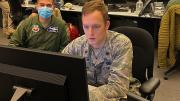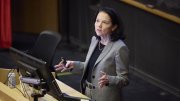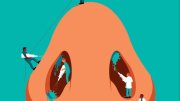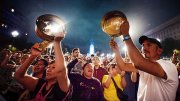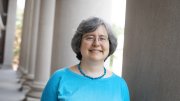From early April to the beginning of June, Richard Menger, M.P.A. ’16, who normally teaches neurosurgery and political science at the University of South Alabama, left his hotel at 6 a.m. each morning with three other doctors, all in uniform, and walked 2.3 miles across Manhattan to Bellevue Hospital, where he ran a COVID-19 intensive care unit (ICU). A lieutenant commander in the U.S. Navy Reserve Medical Corps, Menger had responded to a call for navy medical personnel to support New York City’s overwhelmed public-health system. Bellevue Hospital normally has 18 medical ICU beds and 54 total ICU beds, but when Menger arrived there were 150 patients in need of ICU care; he helped run an endoscopy suite that had been converted into an overflow ICU and worked alongside pediatricians, obstetricians, eye doctors, residents, nurse practitioners, physicians assistants, all adapting to care for coronavirus patients.
For more than a month, New York City was the pandemic’s epicenter both nationally and globally. The city averaged upwards of 5,000 daily cases for much of April and at one point accounted for one-quarter of COVID-19 related deaths in the nation; to date there have been more than 200,000 reported cases in the five boroughs. By March it was already clear that federal aid would be necessary to respond to the outbreak, and that relief depended heavily on Department of Defense (DoD) resources and expertise—ranging from thousands of active-duty and reserve military personnel who supported exhausted city workers, to building new hospital spaces to provide much-needed ICU beds. At every level of the military’s response and adaptation to this unprecedented crisis, from frontline medical workers like Menger to officials in charge of navigating among a complex web of agencies and stakeholders, Harvard affiliates and alumni played a key role.
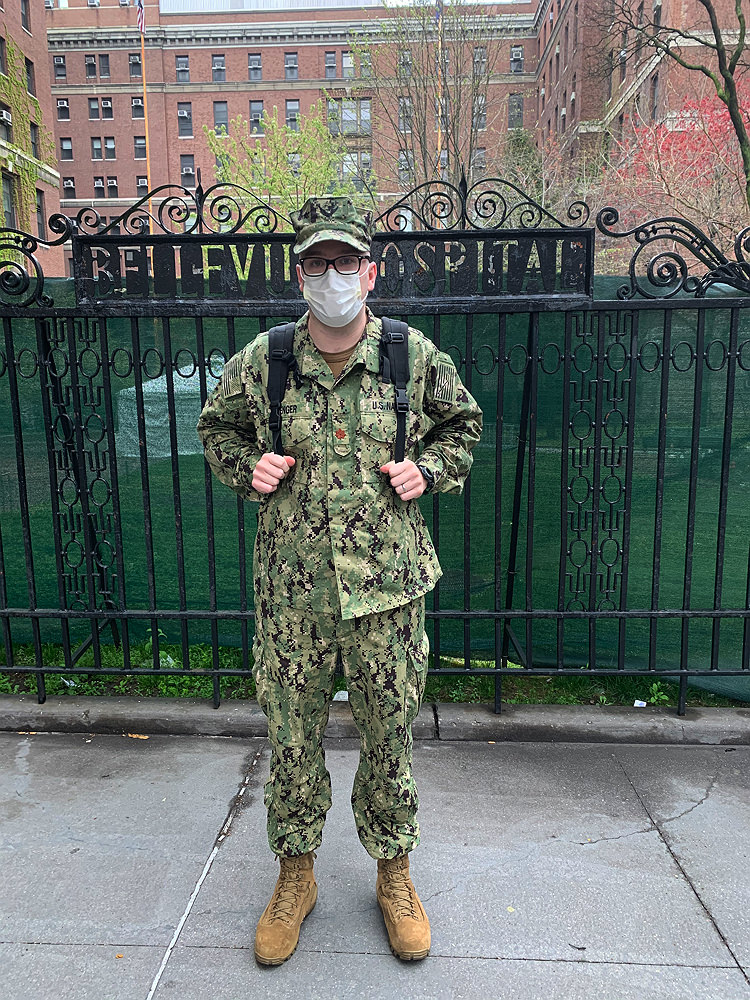
Richard Menger, M.P.A. '16, at Manhattan's Bellevue Hospital
On March 13, when the federal government declared the coronavirus outbreak a national emergency, New York City had already reported several thousand cases of COVID-19, but it was not yet clear the city would see the worst outbreak in the world. Still, Philip Caruso, J.D.-M.B.A. ’19, realized federal assets were likely to be deployed to the city. He asked for a couple of months off from his civilian job at the private equity fund Onex and began looking for ways to help the place he calls home. Having served seven years on active duty as a U.S. Air Force officer, and now a major in the Air Force Reserve, Caruso reached out to contacts at the DoD for ways to help. A former superior from one of his tours in Afghanistan was in charge of the Defense Coordinating Element in New York—which organizes DoD support of the Federal Emergency Management Agency (FEMA) and civilian disaster relief—and welcomed him enthusiastically. By March 18, Caruso was working for FEMA out of New York City’s Office of Emergency Management, helping coordinate DoD support for the city’s COVID-19 response. “It was probably the most impactful job I’ve ever had,” he says.
His new role had “a steep learning curve”: he was used to the military taking charge, but now, he was supporting the overlapping needs of multiple civilian agencies. And the tasks at hand—moving a military hospital ship into New York’s port, setting up emergency mortuary facilities, converting the Javits Center (typically used for automobile shows) into one of the largest hospitals in the country, and staffing all of these facilities, to name a few—were unprecedented. Caruso had to set up a massive data-collection operation, synthesizing information from dozens of agencies about a disease that continues to be poorly understood.
Harvard connections helped him overcome some of these difficulties: physicians like Menger provided him with first-hand information about hospital conditions; a law-school classmate on Governor Andrew Cuomo’s task force helped him communicate with the state. Ultimately, Caruso says, some of the biggest challenges the DoD faced turned into some of the biggest successes in responding to the virus. The military helped turn the Javits Center into a hospital in less than two weeks, and that hospital treated more than 1,000 patients, of whom only a handful died. “It was very challenging, but very rewarding,” he says. “As somebody who lives in New York, I was very fortunate to have the opportunity to give back to the community in that way.”
One of the most important aspects of DoD support was mobilizing more than 4,000 military personnel to support the city’s depleted health-care system. On the night of Friday, April 3, more than 200 navy reserve medical personnel were asked to report to the city within 36 hours. Among them were Menger and his senior medical officer, Ian Valerio, a captain select in the Navy Reserves and a plastic and reconstructive surgeon at Harvard Medical School and Massachusetts General Hospital (MGH). Valerio grabbed his deployment bag, flew to Philadelphia, and was bused into the city. “The surreal thing,” he says, “was coming into New York and going through the Lincoln Tunnel and seeing no cars on the road.”
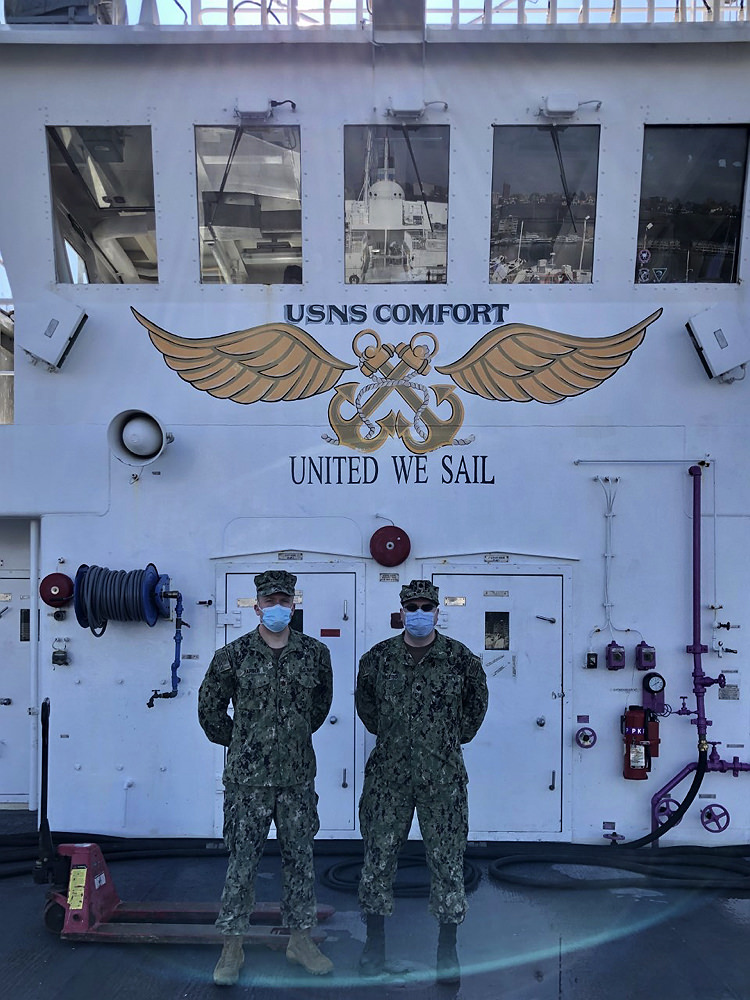
Harvard Medical School physician Ian Valerio (at right) on the USNS Comfort
Valerio is a supervising doctor for the Navy’s operational health support units in the Northeast region; he ran a field hospital when he was deployed in Afghanistan. In New York, he was chosen to help lead the DoD response. “This mission was much unlike anything the military had ever done before,” he explains. “This was really a domestic, pandemic response, unlike most of our military deployments overseas.” Military personnel arrived in the city on a Sunday and were told to be in hospitals by Tuesday, giving Valerio and his military colleagues 40 hours to plan the movement of all the army, navy, and air force personnel. Overcoming tremendous logistical challenges, whether physically moving people or supplying personal protective equipment, Valerio coordinated military support for 11 hospitals critically hit by COVID-19—some of them missing more than 30 percent of their staff due to coronavirus infection. His mission involved setting up the Javits Center hospital, establishing mental-health services for caregivers and patients, overseeing 133 nurses and 77 doctors from the navy, and more. And throughout his service in New York, he was also in contact with colleagues at Harvard, MGH, and the Brigham and Women’s Hospital to discuss the latest findings and research relating to the virus, uniting theoretical and practical knowledge in order to best help patients. “I think we really gave a breath of fresh air to New York City,” Valerio says. In just months, he adds, the entire DoD medical mission in New York City treated more than 31,000 patients—more than were treated in the Afghanistan War.
Hundreds of those patients went through the Bellevue Hospital ICU system, part of which was run by Menger. Neurosurgery, he says, provided good training “in that we are unfortunately used to seeing death and dying” and seriously sick patients. “That I had been exposed to, but not at the consistent, pounding, grinding level that we saw there.” Each day brought new challenges and changing science: Menger can use an established method to confidently determine survival probability for a brain hemorrhage, but for COVID, he says, “we were adapting the tools that we had in real time.” Doctors debated, for instance, whether to use steroids and how much to administer. Only in late June did a study determine that six milligrams of the steroid Dexamethasone was an effective treatment. Menger locates his own biggest success in leading a new group of medical personnel through a totally foreign situation and uplifting the exhausted civilian hospital staff. “The Kennedy School”—both in and out of the classroom—“helped give me [that] skill set,” he says. “I was able to show some adaptive leadership in a situation that was different and unexpected.”
Some of the hardest moments came while caring for health-care workers who had contracted COVID-19, or when speaking with patient families, who were not allowed into hospitals. “It’s really hard to lose a family member, and it’s really hard as a doctor to try to talk to these families who’ve never met you, they’ve never seen you,” Menger says. “And for us, it’s another part of your day. But for them, it’s often the worst conversation they will have in their entire life. And you’re doing that over the phone.” But he was also heartened by the compassion and dedication he witnessed at the hospital. One ICU patient, whose condition was deteriorating, was about to celebrate a birthday, so a staff ICU attending bought him a cake and FaceTimed his wife for a small celebration with the staff. “Those small sorts of bonding between people were very impactful for me,” Menger says. “That goes back to leaving feeling like you made a difference, and feeling gratitude.”
As the coronavirus has come under relative control in New York City, military personnel have been demobilized. Caruso stopped COVID-19-related work on June 1, Menger in late June, and Valerio at the end of the month. But the disease continues to rage elsewhere in the country, with each day bringing record numbers of cases in various states. The work of Harvard affiliates and the DoD in New York may prove instructive to further combatting the pandemic. “Our intellectual as well as our physical capabilities here were able to not only affect New York City, but affect the whole U.S. as this virus spreads elsewhere,” Valerio says, “hopefully transmitting best practices as well as improving treatment paradigms throughout the country and then throughout the globe.”
